You’ve probably had ‘learn Spanish’ on your bucket list for a while but have been continually kicking that can down the road. If that sounds like you, you've come to the right place! I'm about to help you make the process of learning Spanish EASIER and more effective than you ever thought possible.
I myself was always interested in learning Spanish. The flare and fire of the language, the salsa dancing, and the beautiful people drew me in; and for years, I was determined to pull off impeccable rolled ‘r’s and be able to order empanadas in style.
And just like other students, I learned Spanish at school, then promptly forgot most of what I'd learned in the hectic months and years after graduating. #brainDrain
Yet the desire to speak Spanish never went away as the years continued. Fully unshackled from the rigidity of an academic environment, I finally decided to change up my methods. I was now an independent learner empowered to build my own program, and I was motivated to research all the great resources out there to figure out what really works.
After spending way too many months wading through the games, fancy images, and unrealistic conversations presented by dozens of top Spanish apps and websites, I finally stumbled upon Brainscape Spanish, which has since become my primary Spanish study tool amidst a slew of other great supplementary resources.
In fact, I found Brainscape's Spanish flashcards (when combined with a very deliberate series of other activities) to be so effective that I begged Brainscape to let me write about my experience here on their Study Academy. So here I am.
But this article is NOT just about Brainscape Spanish. It's about taking your Spanish learning into your own hands, where one central app-based curriculum—whether it's Brainscape, Babel, Busuu, Rosetta Stone, or whatever—happens to be at the heart of your studies.
After all, cognitive science research shows that the best way to learn Spanish is by balancing real-world study (speaking, listening, and reading) and using deliberate learning tools for grammar and vocabulary.
So let's go through how to learn Spanish by taking a quick look at the:
- Science of language learning; and
- Six tips for incorporating Brainscape into your language learning journey.
¡Vamos! It’s time to learn Spanish faster.
Using brain science to learn Spanish faster
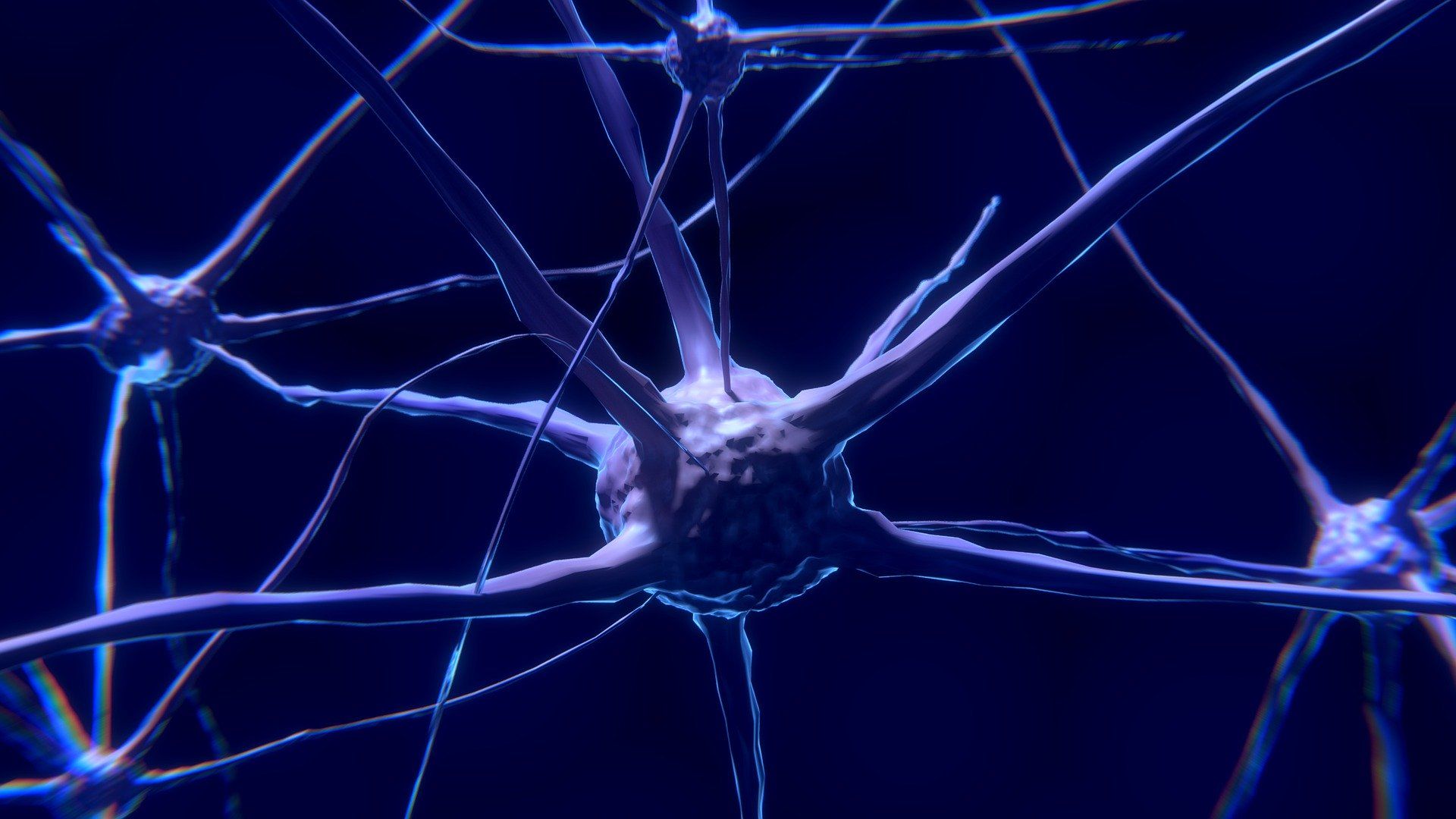
If you were asked to imagine the cutting edge of scientifically proven foreign-language acquisition technology, you would probably think of something fancy and immersive like virtual reality, interactive videos, or holographic displays. You probably wouldn't necessarily think of "flashcards" as being the apex of language-learning science.
Yet the fact is that flashcards are an unmatched format when it comes to the ability to break down concepts into their fundamental building blocks and to review them in a personalized pattern for your maximum learning efficiency.
Indeed, if "the future of learning is adaptive", then the prerequisite is first to break down every learning objective into its fundamental cue/target pair so that it can be practiced in optimal intervals of repetition over time.
Flashcards have thus become among the most popular study tools for independent foreign language learning, and online flashcards have taken it to the next level.
You may have seen flashcard apps like Quizlet, or Cram, or Anki boast a combination of fun, convenience, or cognitive science in their study interfaces. These apps may even be adequate if all of the Spanish flashcards you're studying are ones you've made yourself (or if you're willing to trust a random hodgepodge of flashcards made by unknown users around the world).
Where Brainscape advances the science of language-learning is that we combine the well-proven science of spaced repetition (the most important concept in any learning) with a curriculum specifically designed for spaced repetition.
It is for this reason that Brainscape Spanish should be the app at the center of your Spanish-learning journey. It is the best tool to really solidify the core components of the language: grammar, vocabulary, phonetics, and pragmatics (rules for appropriate and effective communication).
In this section, we take a quick look at what's so special about the Brainscape Spanish curriculum, before we then look at how to incorporate it (or really any other flashcards app) into your overall Spanish toolkit. (If you want to really geek out on this stuff, you can always take a deeper dive into our research on how brain science can help you learn a language faster.)
Reasons why Brainscape's Spanish curriculum is so effective:
- Practical progression of concepts
- Producing the language from the start
- Incremental exposure to maximize learning
- Adaptability to your own experiences
Reason 1. A practical progression of concepts
Have you ever sat in a Spanish class learning about the most common farm animals? Ok, you now know how to properly name a female pig (cerda) and male pig (cerdo) but how does that help you on your trip to Valencia?! No one can order a sangria using that vocabulary.
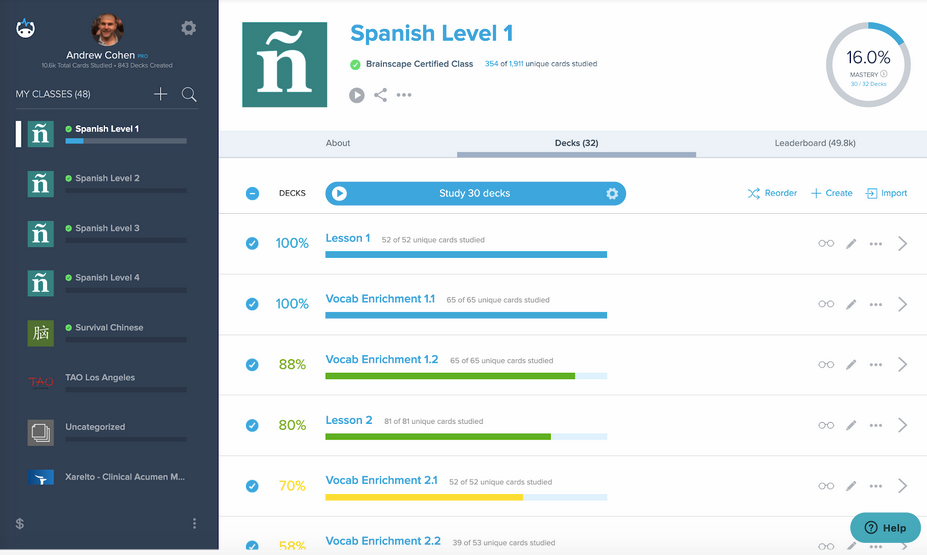
Brainscape has painstakingly ordered the Spanish grammar and vocabulary from most practical (most likely needed in basic conversation) to most specific throughout the entire program. Instead of learning by ‘topic’ (as you would in the classroom), you learn the most practical concepts first. This is majorly useful AND maintains language-learning motivation.
As you move through the flashcard decks, Brainscape ensures that each new concept added is the most important one for your Spanish journey. When this technique is combined with spaced repetition, you’re not only learning new concepts one at a time but also reviewing the ones you’ve learned before.
Reason 2. Producing language from the start
It might be easier to sit in class and have someone passively ‘teach’ you new concepts. But that’s not very effective. Research shows that you’re a lot more likely to remember concepts when you produce them (a.k.a. speaking or writing) as you would in the real-world.
Brainscape mimics real-life language production by asking you to actively recall the concept using a prompt in the native language (e.g. ‘female pig’). After you’ve spoken it out loud, you reveal the card with the correct spelling and playback. It’s almost as if you’re learning with a tutor in real-time.
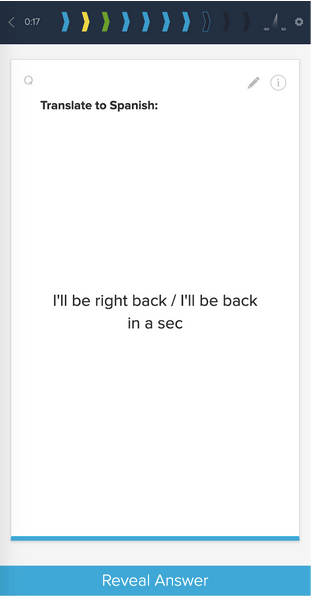
Reason 3. Incremental exposure to maximize learning
Wouldn’t life be easy if we could just memorize the vocabulary for 'un viaje' or 'un restaurante’ to travel confidently or order food? Unfortunately, that’s not how language learning works.
There’s a lot more to learn than vocabulary
As anyone who used earlier versions of Google Translate can attest, attempting to translate languages word-for-word typically results in a string of gibberish. You really have to understand the mechanics of a language.
Brainscape allows you to learn these mechanics in the form of real sentences, where you are forced to translate the whole thing, and then infer the grammatical rule after the fact (with a technical annotation provided in English below).
Brainscape introduces new concepts incrementally
To avoid the cognitive load of difficult sentences with too many new concepts, flashcards in Brainscape's Spanish curriculum are introduced incrementally: one new learning objective per flashcard.
This means no new concept or word is casually used in flashcards unless it's been previously explained and no new concepts are introduced until you’re confident you know the ones previously introduced. According to Krashen's famous Input Hypothesis, this is the best way to maximize the mental processing of a new language.
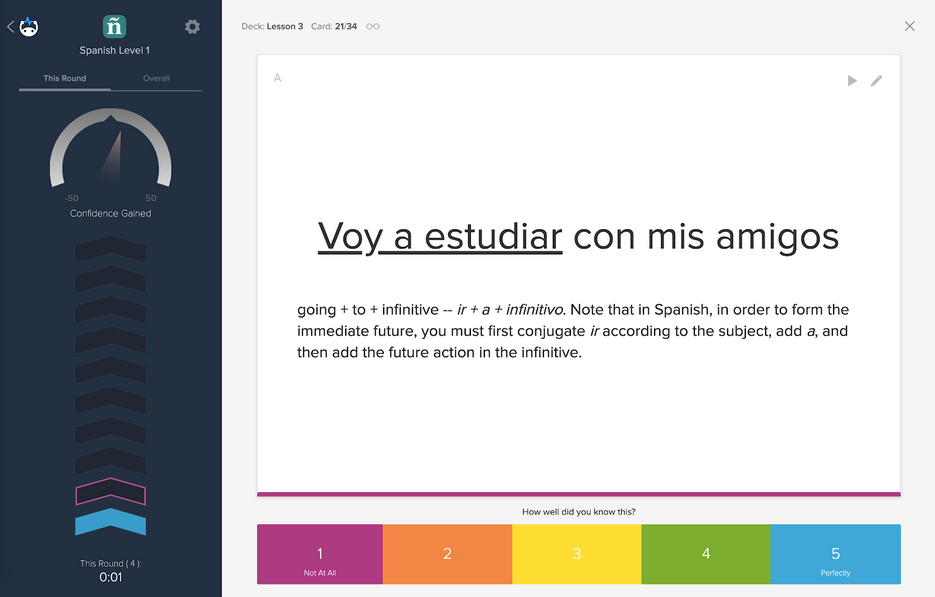
Reason 4. Adaptability to your own experiences
Language connects you with new cultures. It’s the best part of the journey. It also means that a large chunk of learning should come from real-life experiences. Brainscape supports learning both at home AND in the streets of (perhaps) Barcelona. In fact, no other language app offers such a seamless integration with real-world exposure. See for yourself:
Search and assimilate new cards
Imagine you stumble across a new word in real life (or in the practice media presented in the next section). Say, the color blue: ‘azul’. Instead of finding it in the dictionary and forgetting it immediately, you can search for the card in Brainscape and it’s automatically added to your ongoing studies. The next time you open your app to study, guess which word will show up: ‘azul’!
Make new flashcards
Sometimes you might not find a word in our existing curriculum (gasp!). Take the slang phrase ‘que chulo’ as an example. ‘Chulo’ formally translated is used to describe someone as cocky. But in slang, it means something is cool or hip (or even a "pimp" in some countries)! Instead of missing a new piece of vocabulary, make your own flashcard to simply add it to your Brainscape curriculum, with any of your own notes to help you use it in the specific local dialect you're targeting.
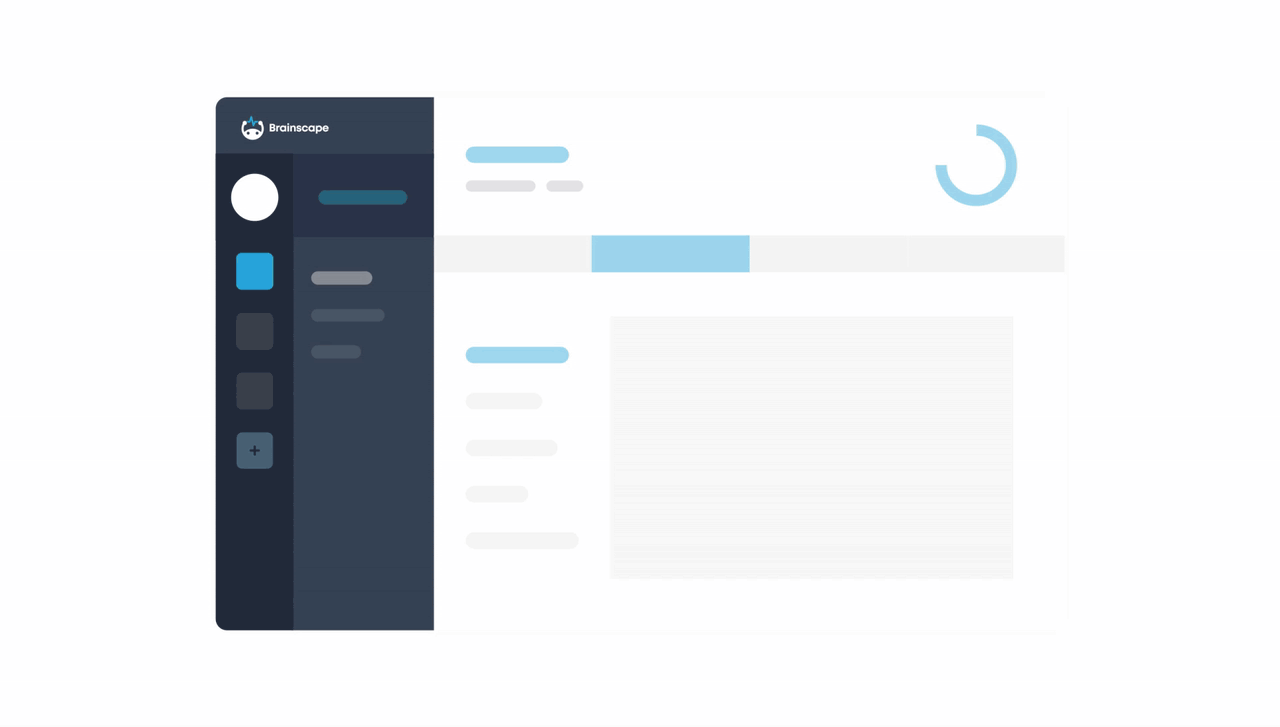
By now, you may have concluded that Brainscape Spanish flashcards could legitimately be used as an alternative to a full course. But that's most feasible if you have the right processes, conversation partners, and good supplementary practice resources. In the next section, we provide a guide to tying it all together.
Build your complete Spanish toolkit
As the avid Brainscape Academy reader that I'm sure you are, you may have previously read our complete language-learning toolkit, which offers an unprecedented number of online resources for anyone learning any language.
In this section, we dial down that toolkit to just Spanish—with the assumption that you may be considering Brainscape Spanish (or an equivalent incremental flashcard-based curriculum) as a central resource in your learning process.
The following are our six main tips on how to best incorporate Brainscape into your language learning journey:
- Start … from the beginning
- Keep practicing—we mean it!
- Produce the language
- Engage in conversation
- Collect phrases and vocabulary
- Complement with resources
Tip 1. Start … from the beginning
Well, THAT’S obvious. Isn’t it? The truth is sometimes we don’t know where to start because we can’t evaluate our own language level. Do two previous classes mean you’ve advanced past the beginner level? What level are you at with 5 years of classes that you took 5 years ago?
When you use the Brainscape app, there’s only one place to start for all levels: at the beginning of the curriculum. You may go through a series of ‘easy’ cards in the first several decks of flashcards since they are all meticulously ordered from most fundamental (e.g. hola, ¿Cómo estás?) to increasingly more advanced for thousands of cards thereafter. Simply rate your confidence a "5" to ensure that the easy flashcards hardly ever repeat again.
Even if you're an intermediate learner who has to crawl through those "easy" cards, the casual review is still a good way to refresh your memory (as I desperately needed after those black-hole university years). And once you get to the point where everything starts to get difficult, you can easily dial up your focus on the new concepts by rating your confidence lower (e.g. a 1 or a 2) so that those flashcards begin to repeat more frequently.
Of course, this advice generally applies to any curriculum (e.g. reviewing a Spanish textbook), not just Brainscape. Just make sure you are honest with yourself about where to begin your review, as it's unlikely you can just pick up where you left off in high school!
Tip 2. Keep practicing—I mean it!
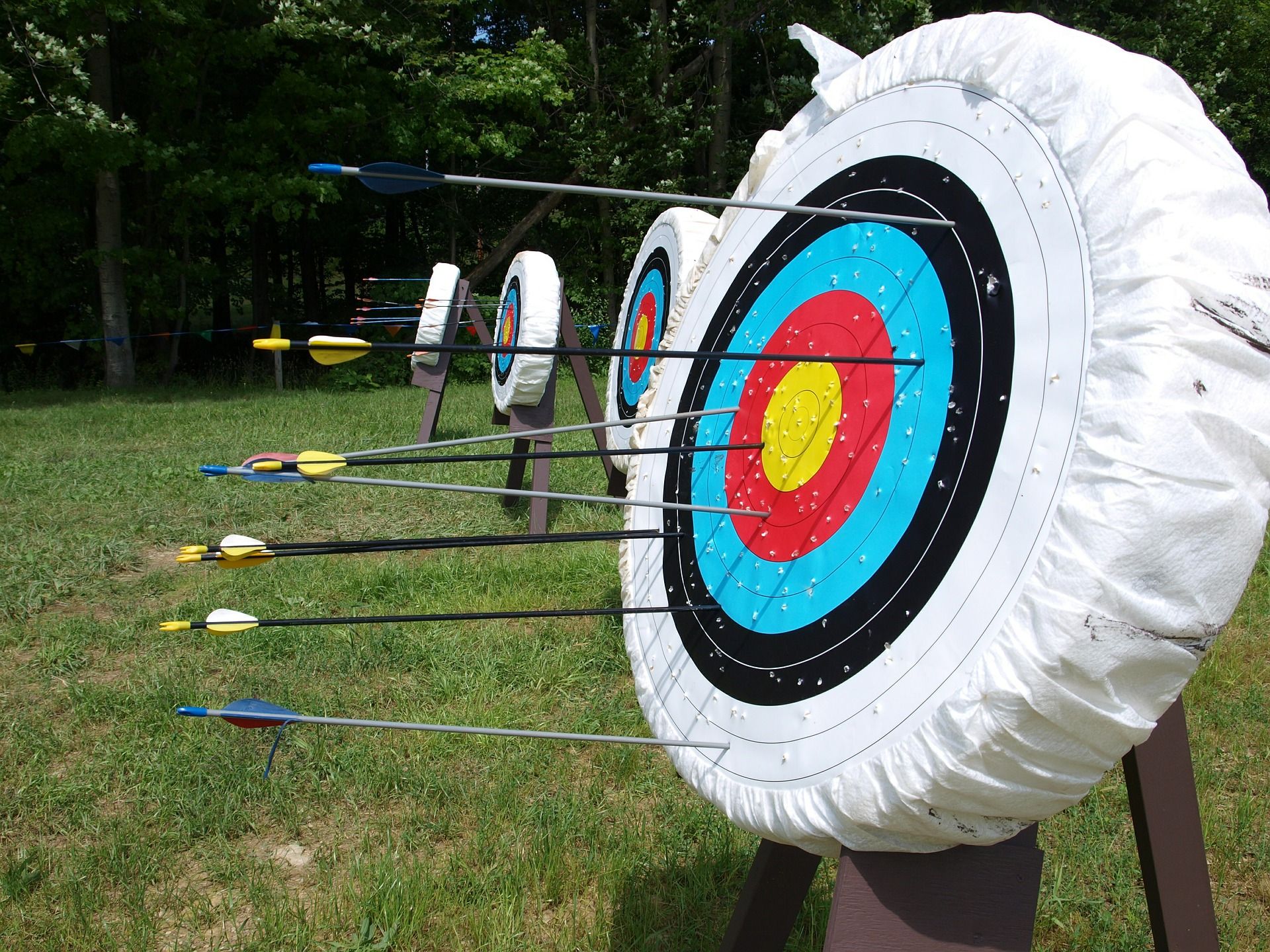
An unavoidable key to learning a language (or any new skill for that matter) is by practicing—a lot. We’ve all heard the rule that it takes 10,000 hours of practice until you’re considered a master. Although the number has since been shown to be totally arbitrary, the core of the idea remains relevant: you won’t become fluent in a week. Brainscape encourages and makes practice as easy as possible, so you practice until you’re perfect!
Study a little at a time
There is a right and wrong way to practice a language. It’s meaningful and spaced practice that makes the difference (Syed, 2011). Instead of sitting bleary-eyed with your app for 5 hours, Brainscape encourages 5 to 30-minute sessions spread throughout the day.
If you try to study too much, you’ll end up with too much cognitive load. That’s because our mental activity is limited to a finite number of concepts. Studying only a little at a time means you focus on only a few new concepts and commit them to memory.
Study continuously
Brainscape helps you focus on continuous practice; a few daily Brainscape sessions on your smartphone can help you build a strong mental “bank” of vocabulary words, verb conjugations, idiomatic phrases, grammatical quirks, and pronunciation variants.
These daily sessions may need to continue for years to come. Brainscape ensures that you put the limited energy you have into learning only. When you open the Brainscape app, you won’t have to think about which terms you’ve already learned, where you stopped last, or what’s coming ahead. Leave that to us.
Tip 3. Produce the language
Brainscape flashcards get you to use active recall: forcing you to think of the answer from scratch rather than choosing it. It’s as if you’re communicating with someone in a foreign language on the streets. This mimics real-life language production and has been shown to be more effective than just passive listening.
Since you’re producing the language from the start, you’ll also improve your pronunciation. Brainscape encourages you to say the phrase or word in your head before flipping over the flashcard. If you’re brave, you’ll even say it out loud. But quietly perhaps; your flatmates don’t need to hear you shout ‘aburrido’ for the 10th time.
When the card has been flipped, you’ll actually have an audio recording by a native speaker that reads out loud the word. If you try reading along with it a few times, you’ll get better at matching the native accent. That way you’ll avoid embarrassing yourself with real humans.
Tip 4. Engage in conversation

Yes, practicing with an app can be pretty productive. But it’s not the same as actually having a conversation. We strongly encourage finding language groups, good old fashioned penpals, or a tutor to practice your speaking. But does your Brainscape app gather dust as you practice IRL? No way, José.
Guide conversations with Brainscape
When you meet your tutor or conversation partner, show them and use the more recent topics you’ve covered in Brainscape while you chat. It’s the perfect way to reinforce your vocabulary and grammar learnings. Even the best repetition system won’t make every concept stick until you apply them.
Bookmark concepts for later conversations
If you’re ever confused by a concept you come across in our curriculum, ‘bookmark’ it by tapping or clicking the star icon in the corner of the flashcard. The next time you meet for a conversation, ask your tutor or conversation partners about those questions.
Tip 5. Collect phrases and vocabulary
Ever had a conversation with someone in a foreign country and you’re like “ok, THAT’s a cool word”? Don’t pretend you don’t have a note somewhere with the best international swear words.
You’ll build a personal library of rules and vocab throughout your language journey to conduct conversations. This takes time and effort. We were 5 years old when we mastered our first language. Let’s try to learn this second one a bit faster!
The best way to learn faster is by collecting and practicing bite-sized bits of language with flashcards. Oh, have I mentioned that Brainscape is a great flashcard app and program? Here’s how Brainscape optimizes this collect & study process:
- Searchability. You can search for new words in Brainscape while you consume content or have a conversation in Spanish.
- Adaptivity. When you search for a new word, you can rate your confidence level on the spot. This automatically adds it to your ongoing studies. You won’t have to remember to add it on your own!
- Customization. If you can’t find a new word or phrase in the Brainscape curriculum, then you should make your own flashcards in Brainscape. It can be added to your studies along with the other cards in the Brainscape curriculum.
Tip 6. Complement with resources
We all look for a magic bullet: the one best method to speak Spanish fluently. Let me tell you a secret: there is none! Brainscape may be effective for certain steps on your language learning journey but it won’t get you to an advanced level on its own.
There are great additional Reading, Listening, and Watching resources out there. In addition to all the news, entertainment, and social practice tools in our complete language-learning toolkit, here are some specific ones that are great for Spanish:
Beginner practice resources:
- Read children’s books. You can find books at Language Lizard that include both the Spanish and English text.
- Listen to children’s audiobooks or podcasts while reading along. CoffeeBreak Languages offers various podcasts divided by topics you’d like to improve on (family, introducing yourself, etc.).
- Write text messages or social media posts by joining a Spanish WhatsApp group or creating an account with Taringa! (the equivalent of Facebook for Spanish speakers).
- Speak with a tutor if you’re needing conversational guidance. There many online options such as Verbling or Superprof.
Intermediate practice resources:
- Read books you’ve already read or easy news articles at Hola qué pasa.
- Listen to podcasts, news, or Youtube videos. News in Slow Spanish allows you to learn about news and culture in ‘slowed down’ Spanish.
- Watch videos in Spanish with subtitles. LingusTV has short video clips to help you get a feel for the Spanish spoken naturally.
- Speak out loud to practice your pronunciation. Reverso uses AI to create natural-sounding translations and provide authentic definitions. At this level you can also try shadowing.
Advanced practice resources:
- Read books, articles, or other native texts that interest you. A great source is Medium. Just search for non-English terms like “Noticias” for news articles in Spanish.
- Listen to native speakers on the radio. Radio Ambulente collects radio podcasts focused on Latin-American stories from all the Spanish-speaking countries. TuneIn also has lots of Spanish radio shows.
- Watch movies in Spanish. Filmatique has a ton of great international film content (although it'll only work for you if you're in the US or Canada). YouTube also has a ton of Spanish documentaries.
- Write emails to Spanish-speaking friends. Or if you're ambitious, write articles or longer, more complicated texts based on current events that you read on BBC Mundo.
- Speak with and find a conversation partner at any of these sources: My Language Exchange, Tandem,Conversation Exchange, Speaky, HiNative, and Polyglot Club.
What are you waiting for? Let’s learn Spanish.
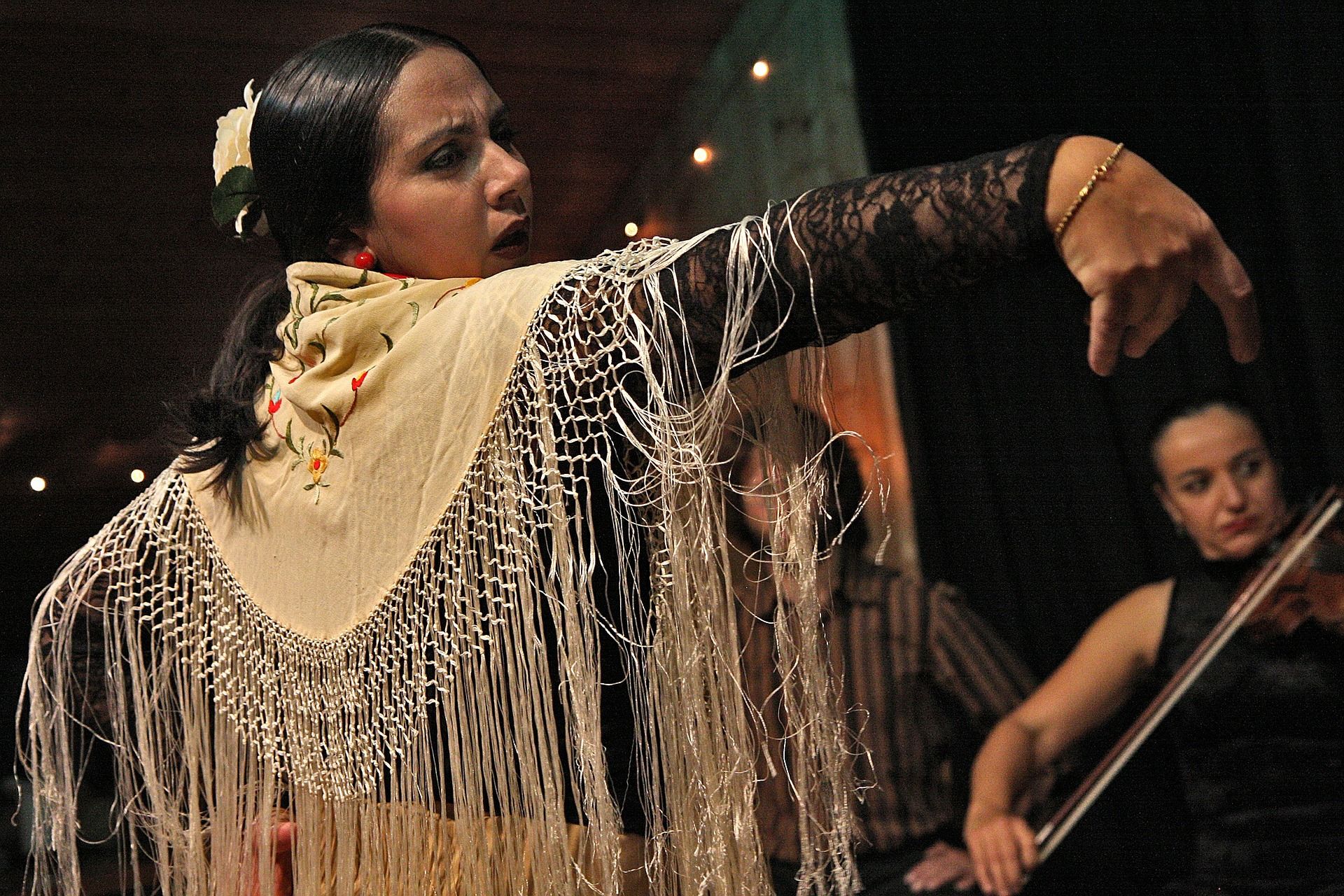
You are clearly motivated to learn Spanish; otherwise, you wouldn’t have reached the end of this article. And this probably wasn’t your first article tackling the Spanish language.
You’ve probably realized there’s a lot of BS out there. Among the millions of sources for Spanish courses, apps, tools, hacks, and lessons, it’s tough finding which ones will actually help you learn efficiently. And traditional methods are just ineffective and costly.
That’s why we’re so proud of Brainscape Spanish flashcards, and why I am so happy to have joined their team of writers researching the science of language learning and good study habits.
Brainscape's language learning program helps you learn faster, stay motivated, produce language regularly, collect phrases and vocabulary, and aid real-life interactions—all in one app and platform. There’s no better complement out there for your overall Spanish-learning journey.
If you’re serious about learning Spanish, it’s really a no-brainer.
Just don’t forget that tools and apps can only get you so far. That extra mile (or 10) has to come from YOU!
Sources
Hambrick, D. Z., Altmann, E. M., Oswald, F. L., Meinz, E. J., Gobet, F., & Campitelli, G. (2014). Accounting for expert performance: The devil is in the details. Intelligence, 45, 112-114. https://doi.org/10.1016/j.intell.2014.01.007
Krashen, S. (1981). Second language acquisition and second language learning. Oxford: Pergamon Press.
Syed, M. (2010). Bounce: The myth of talent and the power of practice. HarperCollins
